The Caucasian leopard has the power to bring nations together. Conservation and peacemaking has the potential to go hand in hand – we took away this lesson from our journey in the Caucasus, where we met leading organisations and individuals in Georgia and Armenia working for the protection of the Caucasian leopard. Through our time with them, we discovered the potential wildlife has to open doors even in areas of political conflict. The Caucasus region is a prime example as one of the biodiversity hotspots of the world but also a conflict-ridden region.
Conflict in the Caucasus
The Caucasus region comprises Georgia, Armenia and Azerbaijan, as well as covers parts of Russia, Turkey and Iran. It also contains a set of protracted conflicts (Nagorno-Karabakh in Azerbaijan, Abkhazia and South Ossetia in Georgia, as well as the ongoing instability in Russia’s North Caucasus) which threaten regional stability. Locals we meet across Georgia and Armenia tell us that they lead their lives with the thought of war constantly on their mind as most of them lived through at least one in the last 30 years. Such mutual hostility between countries of the region (Russia-Georgia, Armenia-Azerbaijan, Turkey-Armenia) and the resulting high levels of military spending means that the Caucasus is a heavily militarised region. But what impact does that have on roaming wildlife?
Fences and mines
Andranik Gyonjyan is a mammalogist and archaeozoologist working in the National Academy of Sciences of Armenia. Together with his colleagues, he monitors the movement of large mammals. He has already captured Caucasian leopards (also referred to as Persian or Anatolian leopards) on camera traps multiple times, but has yet to see an individual with his own eyes. “Since 2020, we have been noticing more injured wildlife on the camera trap footage. Several bears and other animals are captured specifically with foot injuries,” he explains. “One potential cause for this are wildlife traps, but the other possibility is that many of these injuries were the result of landmines.”
Andranik and his wife and researcher Tsovinar Hovhannisyan are very critical towards the impact of the military on wildlife movements. “Military camps in the Nakhchivan mountains undoubtedly disturb animals,” says Tsovinar. The Nakhchivan Autonomous Republic is a landlocked exclave of the Republic of Azerbaijan. It is bordered by Armenia to the east and north, Iran to the southwest, and Turkey to the west. Tsovinar and Andranik add that landmines are placed all along the Armenia-Nakhchivan border. Many of them are leftover mines but new mines appear as well. To the east, the Armenia-Azerbaijan border is home to a plethora of oddities. Four enclaves, a breakaway state, the infamous territorial dispute of Nagorno-Karabakh, and a new travel corridor that connects Azerbaijan to its large autonomous exclave of Nakhchivan are all guarded by military troops.
To the west, between Turkey and Armenia, a barbed wire and no-go zone along the whole border was set up in the 1950s when this used to be the border between the Soviet Union and the NATO member Turkey. And towards Iran, although there is no military conflict, the border is fenced and protected by Russian troops. Hence, for wildlife, it is only towards Georgia that Armenia’s border is open and permeable without any risk.
Nature knows no borders, but under what cost?
The unique camera footage of a three-legged leopard in southern Armenia captured by Andranik and his team is a great example of nature’s resilience. “The video shows that even with a missing leg this individual is capable of hunting and surviving in wild nature,” tells Andranik. The leopard seems to be in good shape, which fills both Andranik and Tsovinar with hope for the species, against all intrusions by humans.
The three-legged Caucasian leopard captured on footage in southern Armenia in 2022 (A.Gyonjyan and G.Kaloyan / Scientific Center of Zoology and Hydroecology Nas Armenia)
But the population trend of Caucasian leopards doesn´t allow such incidents. Since the 18th century, Caucasian leopard numbers have been declining and they have disappeared from over 80% of their historic range. Together with all the other subspecies, the leopard made it into the Red List of The International Union for Conservation of Nature (IUCN). Although leopards are assessed by IUCN as a single species, and classed as Vulnerable, the Caucasian leopard subspecies is singled out as Endangered. Moreover, there are no current, robust estimates of the total number of mature individuals, and according to the latest IUCN assessment published in 2008, there are about 800–1,000 Caucasian leopards in the wild.

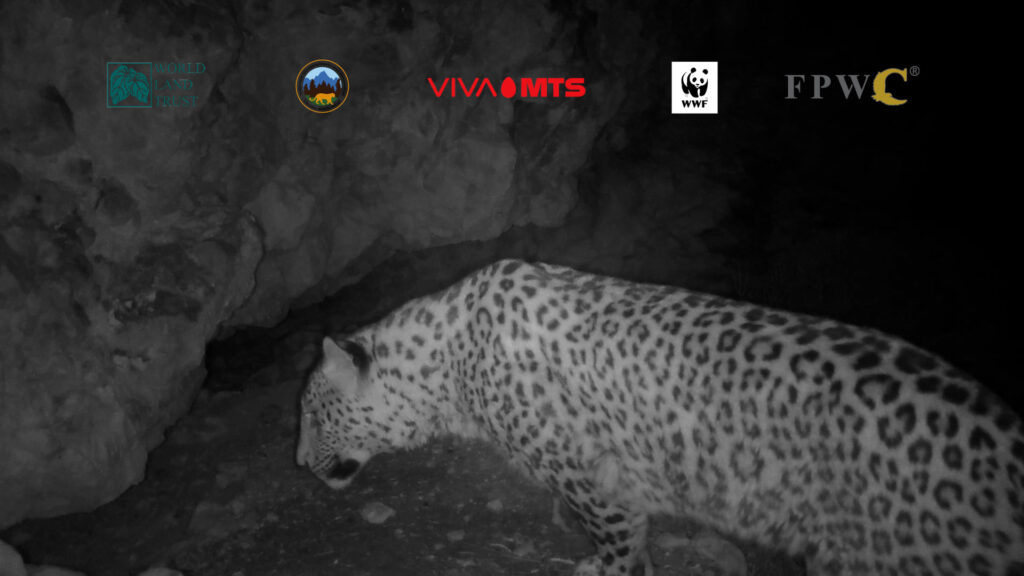
Left: Researchers Tsovinar Hovhannisyan (centre) and Andranik Gyonjyan (right) follow the Caucasian leopard population trends closely. Right: In the Caucasus Wildlife Refuge managed by FPWC, two leopards have already caught on camera.
According to Andranik and Tsovinar, there are roughly around ten individuals living in Armenia, with a breeding pair in the southern part of the country. But due to the elusiveness of the subspecies, it is almost impossible to provide a more accurate estimation. Two of these leopards are roaming through the territory of the Caucasus Wildlife Refuge, the private protected area of FPWC, an organisation we visited a few days before, where Tsovinar works as well. The fact that the FPWC team captured these two individuals on camera shows the importance of safeguarding such protected areas.
The beautiful Caucasian leopard Nova in the Caucasus Wildlife Refuge (FPWC)
More areas need protection
Further south, we visit Arpa Protected Landscape, the country’s first community-managed protected area. Spanning across 6000 ha, this arid and rocky gorge and its surroundings are home to an incredible variety of plant and animal life. This includes the Caucasian leopard as well as its favourite prey: the bezoar goat, the population of which has significantly increased over the last few years. Here we meet Vartkes, a local ranger and nature guide who has likely seen more leopards in the wild than anyone else in Armenia.
“I remember like it was yesterday. It was in April 2019, that we found three horses dead. I first thought that a wolf was the culprit, and I returned to the area to see if I could spot it. There at 6 AM in the morning, I found a Caucasian leopard. It was about 60-70 metres from where I was standing. I was astonished to see how big and gracious it was,” Vartkes recalls, while showing us the video on his phone. He continues with telling us about another occasion, when in bright daylight, he saw a leopard hunting goats.

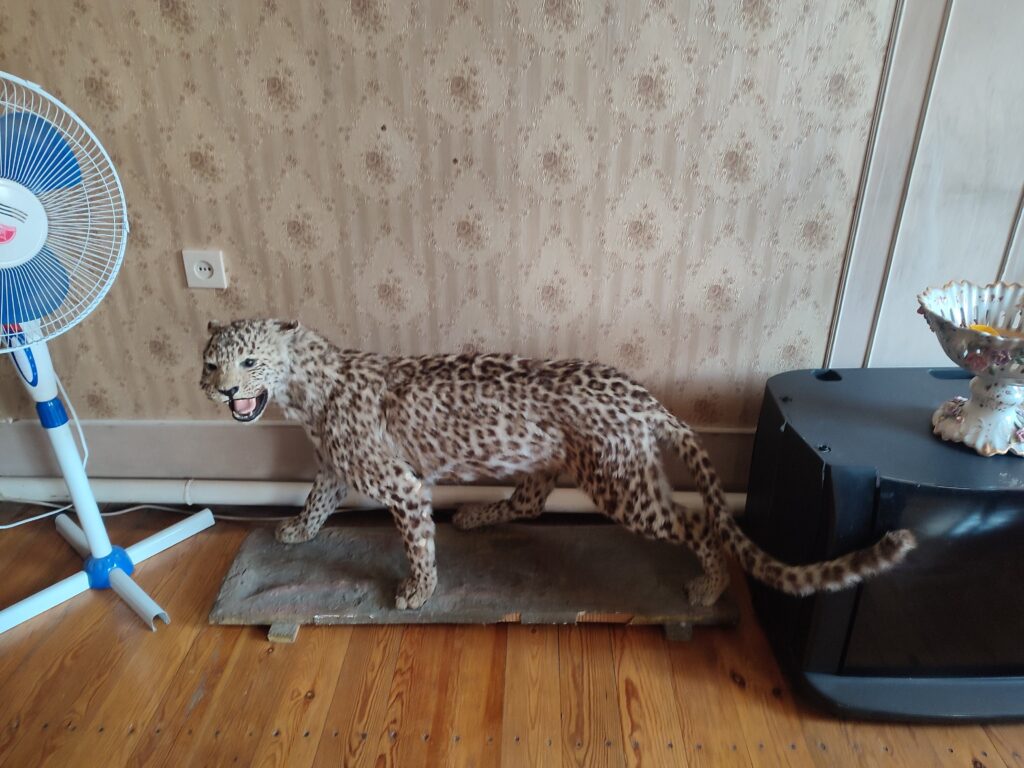
We join Vartkes on his ranger duties one day with the hope and dream of seeing a Caucasian leopard as well. Although luck was not on our side, it was very interesting to learn about the preferred habitat for this species.

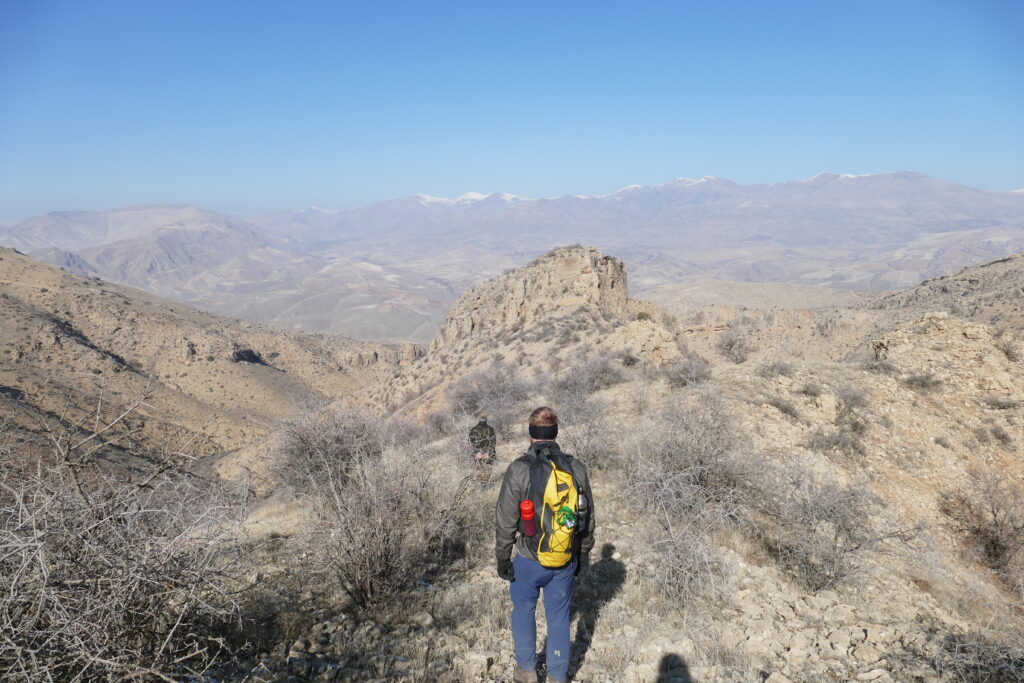

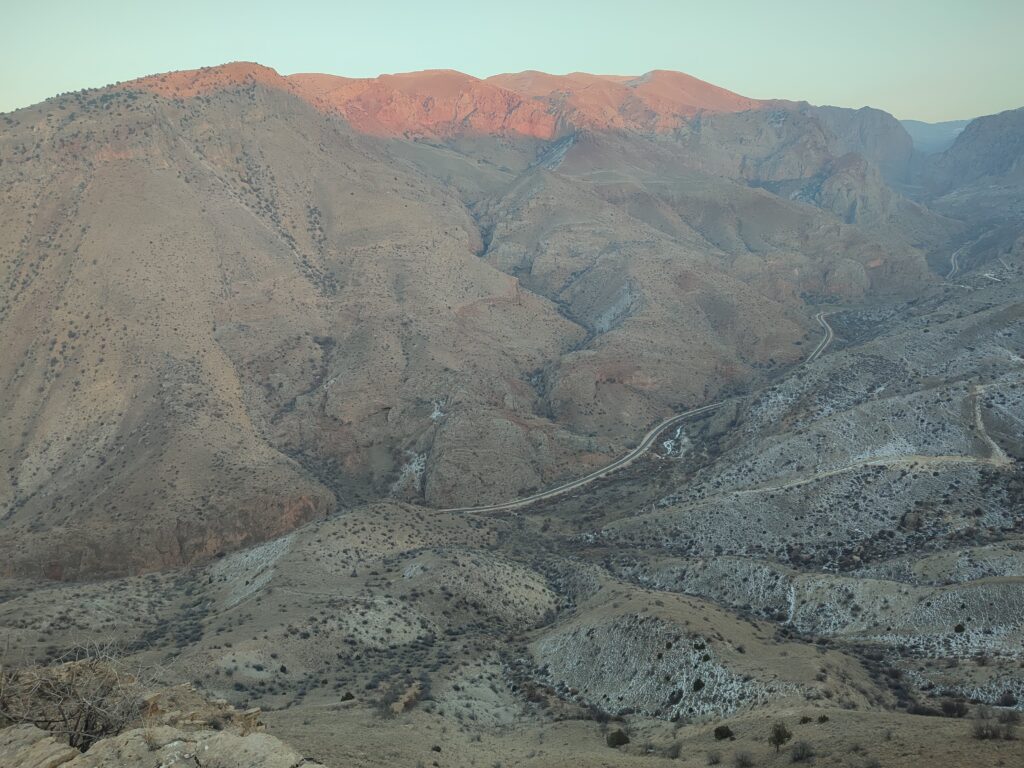
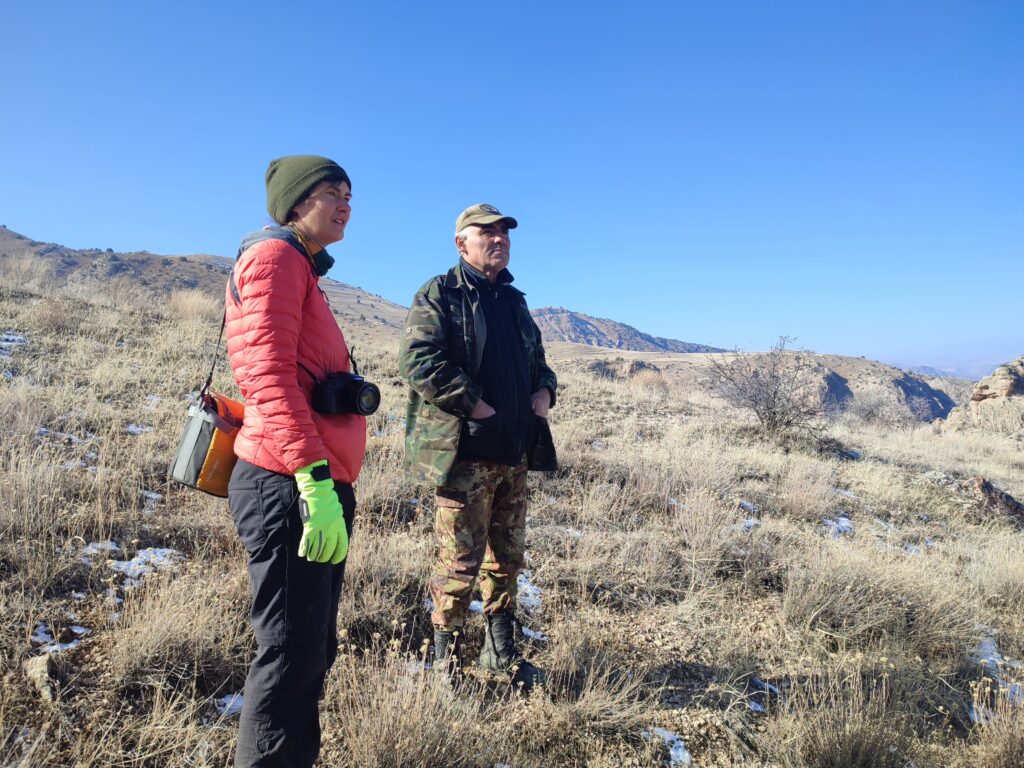
“The Caucasian leopard doesn´t like snow. It much more prefers dry climate and arid landscapes that can be found in the eastern and southern parts of the Caucasus,” Vartkes explains. “Arpa is the perfect habitat for them. Last September, we captured three individuals on camera. However, as the habitat of a leopard is 2000-3000 ha large, Arpa Protected Landscape is reaching its carrying capacity. We need more areas under protection, and we need them urgently.”
As of now, 12% of Armenia is protected but according to the UN Convention on Biological Diversity (CBD) until 2030 this number should rise to 30%. The Armenian government works towards this goal, and Tsovinar tells us that from this year onwards, important bird areas and biodiversity areas should receive protection too. At the same time, FPWC lobbies for the recognition of private protected areas and community conservation areas.

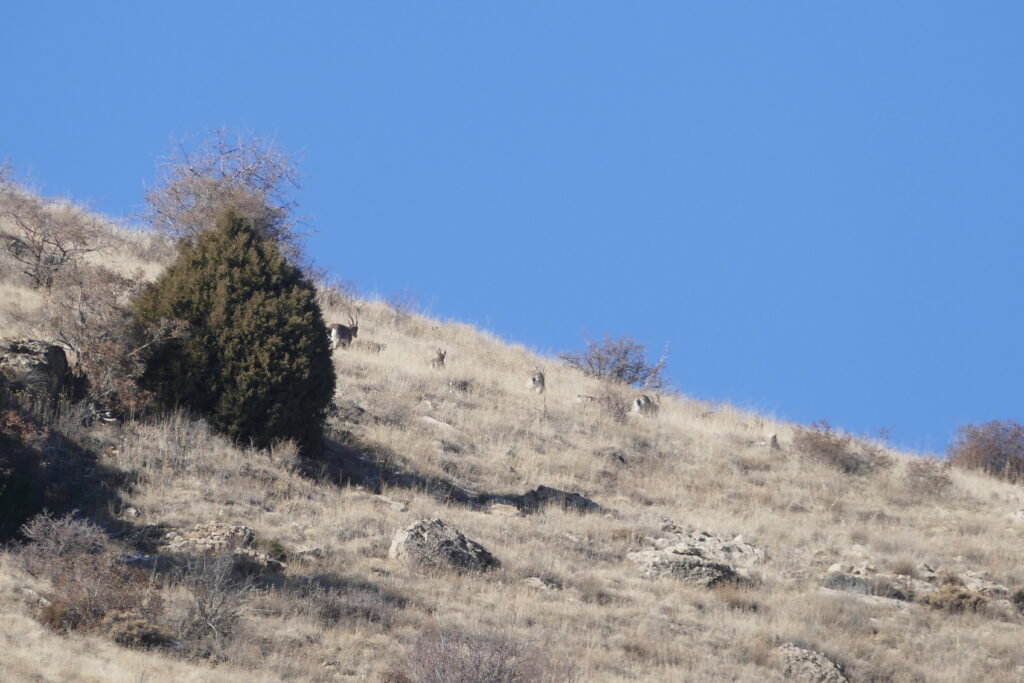
Just before sunset, Vartkes takes us out to search for bezoar goats. It doesn’t take long until we see two groups of bezoars passing through the rocks, displaying their distinctive acrobatic movement across the steep slopes.
Leopard conservation across borders
In Georgia, conservationists desperately hope that the Caucasian leopard will settle down permanently in the country once again. In, Georgia the first leopard was spotted in 2003 and in later Bejan Lortkipanidze, conservation programme officer at the NGO NACRES was there in 2008, to see it with his own eyes in Vashlovani National Park. By that time, WWF had been working on the conservation of the Caucasian leopard in the South Caucasus region for several years, with the hope of recovering the population that was completely extirpated during the Soviet era. Efforts seem to have worked when the leopard in Vashlovani showed itself in 2003 and could be captured on camera footage until 2008. Conservationists all across Georgia were ecstatic. However, for unknown reasons they could not find any sign of a leopard for the next 12 years. It was only in 2021, a camera trap in Tusheti National Park, close to the Russian border, captured the figure of another Caucasian leopard. The same leopard was caught on camera last in August 2022.
With fresh hope, Georgian conservationists aim to protect potential leopard habitats as best as possible. “Vashlovani Protected Areas, bordering Azerbaijan, would be ideal habitat for the leopard, and we hope that it’s only a matter of time that we see the next individual there,” adds Bejan with anticipation.
Saving nature to save ourselves
Many of the world’s conflict zones are located in places where biodiversity is high. The Caucasus, being one of the world´s 36 biodiversity hotspots, is no exception. Humans have already done enough destruction through habitat fragmentation and loss, but it is clear that conservation cannot happen without peace. Among researchers and conservationists the direction is clear. In 2019, experts of the three Caucasian countries met to work on an action plan for the Caucasian leopard, identifying possible transboundary habitats and corridors that can serve as a protection for the species.
So, the big question stands. What can be the role of nature, and the role of the Caucasian leopard in helping to broker peace? Biodiversity protection and our own survival are deeply interwoven. We must protect natural resources and the environment for national security, for food security, for water security, for livelihood security, for energy security, and for climate security. Therefore, protecting nature and biodiversity derives from the need to save ourselves.
As we see from the example of the Caucasian leopard, aside from all other things, biodiversity needs to also be protected from the consequences of armed conflict. However, it also offers an opportunity for people to come together, resolve conflicts, join in the protection of shared natural heritage and ultimately, build peace. And maybe, the Caucasian leopard can lead the way on this journey.

